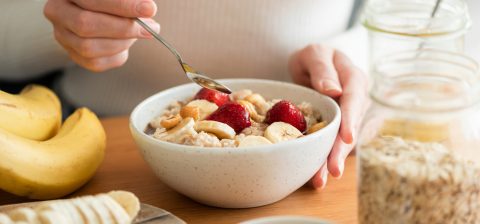Sunday Times Healthy Times
Eat Up
The first thing you need to understand when it comes to type 2 diabetes is that there’s no “one size fits all” approach. “Recommendations of when and what you should eat need to be individually tailored according to your age, duration of diabetes, medical therapies and preferences, as well as your activity level and abilities,” explains Nicola Wilken, a registered dietitian at the Centre for Diabetes and Endocrinology. “In addition, and perhaps most importantly, the concept of a ‘diabetic diet’ is a myth. Anyone living with diabetes is on a journey of discovery about how different foods and their amounts – as well as when they are eaten – affect your blood glucose levels (BG) and ultimately your overall health and quality of life. That’s why it’s so important to consult a registered dietitian, who is uniquely skilled to assist you with making appropriate food choices.”
How often should you eat?
While consistency in carbohydrate intake, spacing and regularity of meals may assist in controlling BG, the “rule” of needing to eat six times a day (three meals and three snacks) is now outdated, says Wilken. “Your meal plan needs to be personally tailored, with the risk of hypoglycaemia weighed up against that of weight gain. Snacks are not necessary if you’re not hungry, as these will only contribute to a high pre-meal BG reading or additional calories, especially if you don’t administer additional insulin for that carbohydrate-containing snack. The current recommendation is to eat three healthy meals daily with a controlled energy intake in order to prevent hunger and overeating, and to assist with an evenly distributed total glycaemic load over the day.”
Medication and meal timing
The goal of effective diabetes management is to achieve desired BG levels throughout the day in order to prevent hypoglycaemia and improve overall BG control. “Carbohydrates are mainly what will determine your BG levels after eating,” says Wilken, “with the type and amount of carbohydrate influencing how quickly these increase and to what extent. The aim of optimal BG control is to decrease the risk of complications; this is aided by the use of medication. This can range from oral anti-diabetic medication (OAM) to four or more injections of insulin per day, with the type and dose of medication once again being individualised.”
If you’ve been prescribed OAM, the timing and amount of carbohydrates you consume may not be as important as when you’re on insulin, says Wilken. “If you’re taking premixed insulin or three preprandial insulin injections, you’ll need to eat according to the peak time of action of the short- or rapid-acting preprandial insulin. For example, you may need to inject 30 minutes before a meal is consumed to ensure that the insulin meets the ingested carbohydrates at the right time.
“Getting the balance right is crucial,” she adds, “as overestimation of the carbs you plan to consume and therefore injecting too much insulin could lead to low BG, while underestimation will lead to high BG. Furthermore, weight gain is commonly associated with insulin therapy, which could be due to using too much insulin for too little carbohydrate, leading to snacking after a meal to avoid low BG. It’s all about finding out what works best for you.”
The dawn phenomenon?
Remember that insulin sensitivity varies throughout the day and you may find that your BG is high in the morning. This, says Nicola, could be due to the dawn phenomenon. “What happens is that your body’s release of certain hormones results in a rise in BG overnight, so you may have to reduce the amount of carbs you eat before bedtime or your medication may need to be adjusted. You’ll be able to identify patterns by testing your BG regularly.”
Remember that insulin sensitivity varies throughout the day and you may find that your BG is high in the morning. This, says Nicola, could be due to the dawn phenomenon. “What happens is that your body’s release of certain hormones results in a rise in BG overnight, so you may have to reduce the amount of carbs you eat before bedtime or your medication may need to be adjusted. You’ll be able to identify patterns by testing your BG regularly.”






 Sign-up and receive the Business Media MAGS newsletter OR SA Mining newsletter straight to your inbox.
Sign-up and receive the Business Media MAGS newsletter OR SA Mining newsletter straight to your inbox.